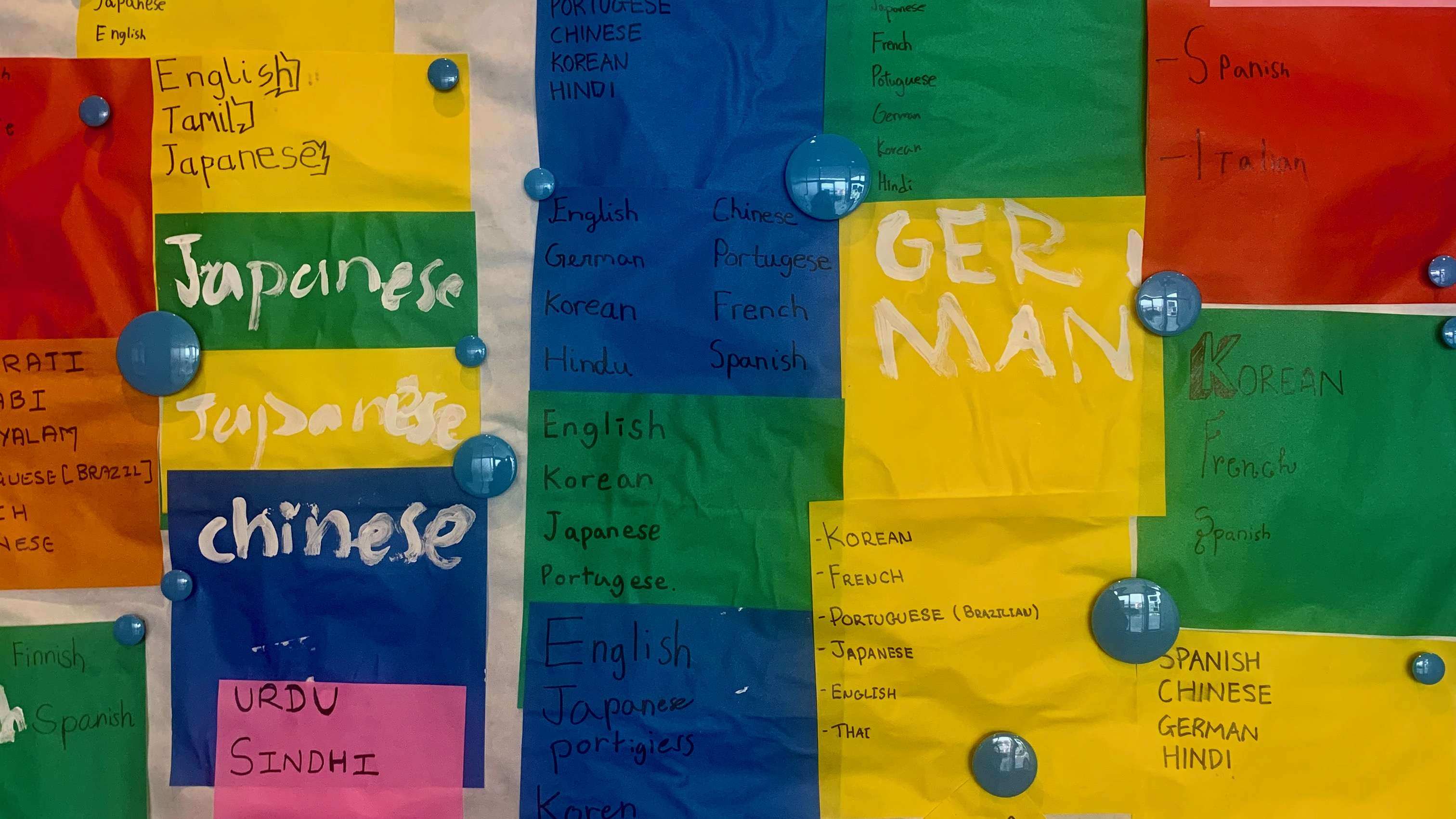
It is not uncommon to hear around any given dinner table of a bi-cultural English/Japanese family, including my own, “Salt wo totte” or the related, “Please pass the shio.” The conventional wisdom of the past would have had me or my wife gently correcting our young dual language learners to choose one and properly ask for the salt. But time and knowledge evolve, and the current phrase ‘translanguaging,’ along with the pedagogic theory behind its importance, perfectly demonstrates what we strive for at NIS.
What is Translanguaging?
What is translanguaging, and why is it not only welcome but celebrated at NIS? It is the process whereby multilingual speakers utilize their languages as an integrated communication system to help them understand, interact with - and shape their world.
At NIS, all our students operate in more than one language to some degree - and some of our students are highly bilingual or multilingual, functioning mainly in English while at school, but using their mother tongue at home or outside of school. And these languages are not just systems for communication; they are also a representation of identity and culture.
Why is Translanguaging Important?
Language is not just how we express ourselves; it is also how we understand ourselves. Consequently, in a multilingual environment such as NIS, it is incredibly important that children are asked to bring their languages to the learning environment. Of course, our shared community language is English - and we must embrace this as we support one another as a community. But this does NOT mean that other languages should be ‘checked at the door.’
On the contrary, we know that developing a strong mother tongue, it is easier for students to access and learn additional languages. We also know that by using different languages to examine and evolve an understanding of content and concepts, students can go deeper with their learning - and so then find it easier to ‘report out’ in the community language of English. Skilled international school teachers can embrace the richness of a culturally-sustaining way of teaching, which enables languages to enrich the learning environment, build community, deepen understanding, and build identity.
Students Lead the Way
As a perfect example of how this concept is integrated into student life, the Home Language Club (HLC), a student-led language club, provides opportunities to value and nurture mother tongues. Every week, secondary students who excel in their mother tongue, organize educational and entertaining activities with elementary students to help support them, and further develop their mother tongue.
These activities are beneficial to both primary and secondary students, participants as they celebrate “who they are.” And the language skills, learned and reinforced, contribute positively to the richness of the NIS community.
HLC activities include educational games through literacy development, reading, and discussing stories about their countries’ cultures using their mother tongue. The students plan these activities in six different languages, including Japanese, Spanish, Chinese, Korean, Portuguese, and French.
Last Word
There have been many studies to give us the science behind the benefits of Translanguaging, but we don’t need science when we live it and see it every day. Classroom or dining table, the importance of supporting our young learners to utilize all the tools in their linguistic toolboxes to communicate and express themselves has an impact on their overall learning. It should certainly be both encouraged and celebrated.

